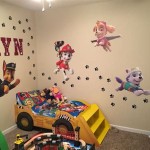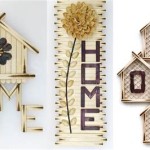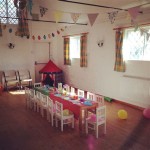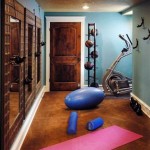How Much Does It Cost To Decorate A Two-Bedroom House?
Decorating a two-bedroom house involves a wide range of costs depending on the desired aesthetic, quality of materials, and extent of the project. Whether one opts for a simple refresh or a complete overhaul significantly impacts the overall budget. This article explores the various factors influencing decorating costs and provides a general price guide.
One of the most significant cost drivers is furniture. Furnishing a two-bedroom house can range from a few thousand dollars for budget-friendly pieces to tens of thousands for high-end, designer furniture. Essential furniture items include beds, sofas, dining tables and chairs, dressers, and bedside tables. The chosen style, material, and brand significantly influence the price. For example, a solid wood dining table will typically cost more than a laminate one.
Wall treatments contribute significantly to the overall decorating budget. Paint is generally the most affordable option, with costs varying depending on the paint quality and the room size. Wallpaper, on the other hand, can be considerably more expensive, especially designer or specialty prints. Other wall treatments, such as textured finishes or paneling, fall within a wider price range depending on the material and complexity of installation.
Window treatments play a crucial role in both aesthetics and functionality. Basic blinds or curtains offer an affordable way to control light and privacy. Custom-made drapes or high-end blinds, however, can increase costs significantly. The choice of fabric, hardware, and installation complexity influence the overall price.
Flooring is another major decorating expense. Options range from budget-friendly laminate or vinyl flooring to more expensive hardwood or tile. The material, size of the area, and installation complexity determine the overall cost. For example, installing hardwood flooring in a large living room will be considerably more expensive than installing laminate in a smaller bedroom.
Lighting fixtures contribute significantly to both ambiance and functionality. Simple overhead lighting is generally the most affordable option. Decorative pendant lights, chandeliers, or wall sconces can add a touch of elegance but come at a higher price. The style, material, and installation complexity impact the overall lighting costs.
Decorative accessories, such as rugs, artwork, cushions, and throws, can add personality and style to a space. Costs for these items can vary widely, from inexpensive finds at discount stores to high-end pieces from art galleries or design boutiques. The chosen style, material, and brand significantly influence the price.
Professional services, such as interior design consultation or painting services, add to the overall decorating budget. While these services can be beneficial in terms of time and expertise, they come with associated costs. Interior design consultation fees vary depending on the designer's experience and the scope of the project. Painting services are typically priced based on the square footage of the area to be painted.
Budgeting for unforeseen expenses is crucial. Unexpected costs can arise during any decorating project. These might include repairs, additional materials, or changes in the project scope. Allocating a contingency fund can help absorb these unforeseen expenses and keep the project on track.
Creating a detailed budget and prioritizing spending based on individual needs and preferences is essential for successful decorating. Researching prices, comparing options, and seeking professional advice when needed can help individuals make informed decisions and stay within budget.
Choosing DIY options can significantly reduce decorating costs. Simple tasks, such as painting walls or assembling furniture, can be undertaken by homeowners with basic DIY skills. However, more complex tasks, such as electrical work or plumbing, should be left to qualified professionals.
Phased decorating allows individuals to spread the costs over time. Focusing on one room or area at a time allows for greater control over spending and prevents overwhelming financial burdens. This approach also allows for adjustments to the budget and design as the project progresses.
Repurposing or upcycling existing furniture and decor can be a cost-effective and sustainable decorating strategy. Repainting old furniture, reupholstering chairs, or repurposing existing items in new ways can breathe new life into a space without significant investment.
Shopping sales and discounts can significantly reduce decorating costs. Looking out for seasonal sales, clearance items, and discount codes can help individuals save money on furniture, decor, and materials. Comparing prices across different retailers can also help identify the best deals.
Consider the long-term value and durability of chosen items. Investing in high-quality, durable pieces might involve a higher upfront cost, but it can save money in the long run by reducing the need for frequent replacements. Considering factors like durability, maintenance, and longevity is crucial for making informed purchasing decisions.

How Much Does It Cost To Furnish Your Home Breakdown By Room

How Much Does An Interior Designer Cost In 2025 Decorilla

How Much Does It Really Cost To Furnish A Al Prop

How Much Does An Interior Designer Cost In 2025 Decorilla

Low Cost Two Bedroom Elongated House Design Cool Concepts

What Are Painter And Decorator S In 2025 Checkatrade

2 Bhk House Design 2bhk Interior Designcafe

How Much Does It Cost To Paint A Room 2025 Data

Thought You Couldn T Afford An Interior Designer Think Again

Two Bedroom Small House Plan Cool Concepts
Related Posts







